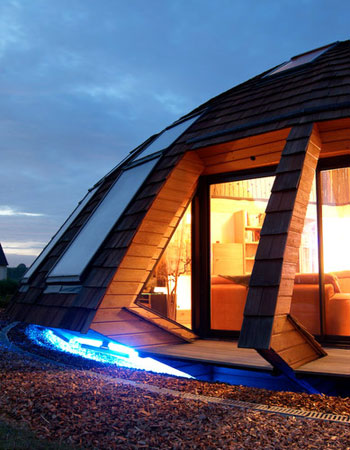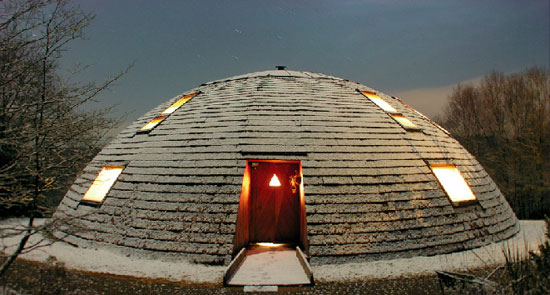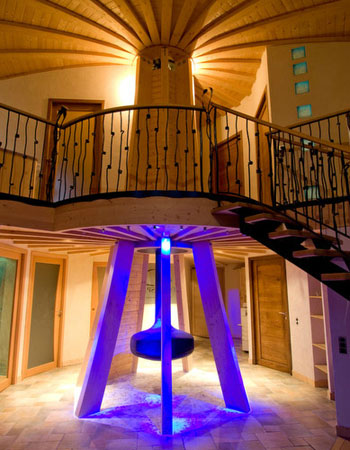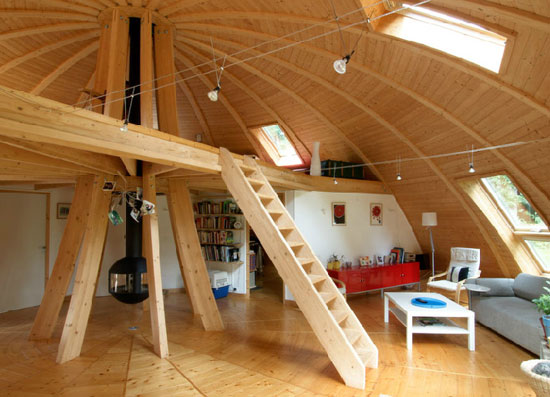Counting among its numerous advantages that it is made of sustainable materials, can withstand typhoons, can potentially survive an 8.0 earthquake better than your average single-family home – and looks significantly cooler – the Domespace prefabricated home is an old idea that is ideal for today’s forward-thinking and environmentally-friendly mindset.
First imagined by architect Patrick Marsilli in the late 1980s, Domespace homes have since been built all over the world including the United States, Europe and Asia. Domespace homes are unique in that they get their inspiration directly from the curvilinear homes found in nature, like shells, seeds, burrow and other kinds of nests. If you think about it, the dome or sphere is present everywhere we look in nature, including the wombs of the mothers who birthed us. Dome style homes also have an air of science-fiction to them, looking rather fantastical and otherworldly, but in reality very similar to what our ancient ancestors envisioned for their home environments. The fact that the homes so commonly built throughout the world today possess sharp right angles and long corridors, actually goes against our nature; they are forms we have nothing in common with.
Domespace homes take into consideration the needs of humans and are designed to satisfy them to perfection. The thermal benefits of wood are inherent in Domespace homes, as they are made from spruce, red cedar and other thick cork and wood pulp. Such materials confer exceptional heat efficiency and in conjunction with the shape of the house, provide a warm, cocoon-like atmosphere. Domespace homes were invented at a time when almost nobody was talking about sustainability, but the fact is their design proposes real and significant changes in the housing industry. Their wood is chemical-free and sustainable, releasing no radioactivity, harmful gas or dust, and providing considerable savings in heating and cooling. The rotational feature of the house allows all areas of the house at some point during the day to get sunlight; this is not the case in many traditional houses that have permanent dark areas. The luminosity within Domespace is also enhanced by natural openings directed towards the sky, which bring in more light than vertical windows. The modular design of the structure increases usable space and helps to keep unnecessary movement limited – in a Domespace with a 24-foot radius, there is 1,250 square feet of livable space.
For those looking to move beyond the angles of modern architecture and who desire a living space that is truly in harmony with nature, a Domespace home is certainly worth looking into.






